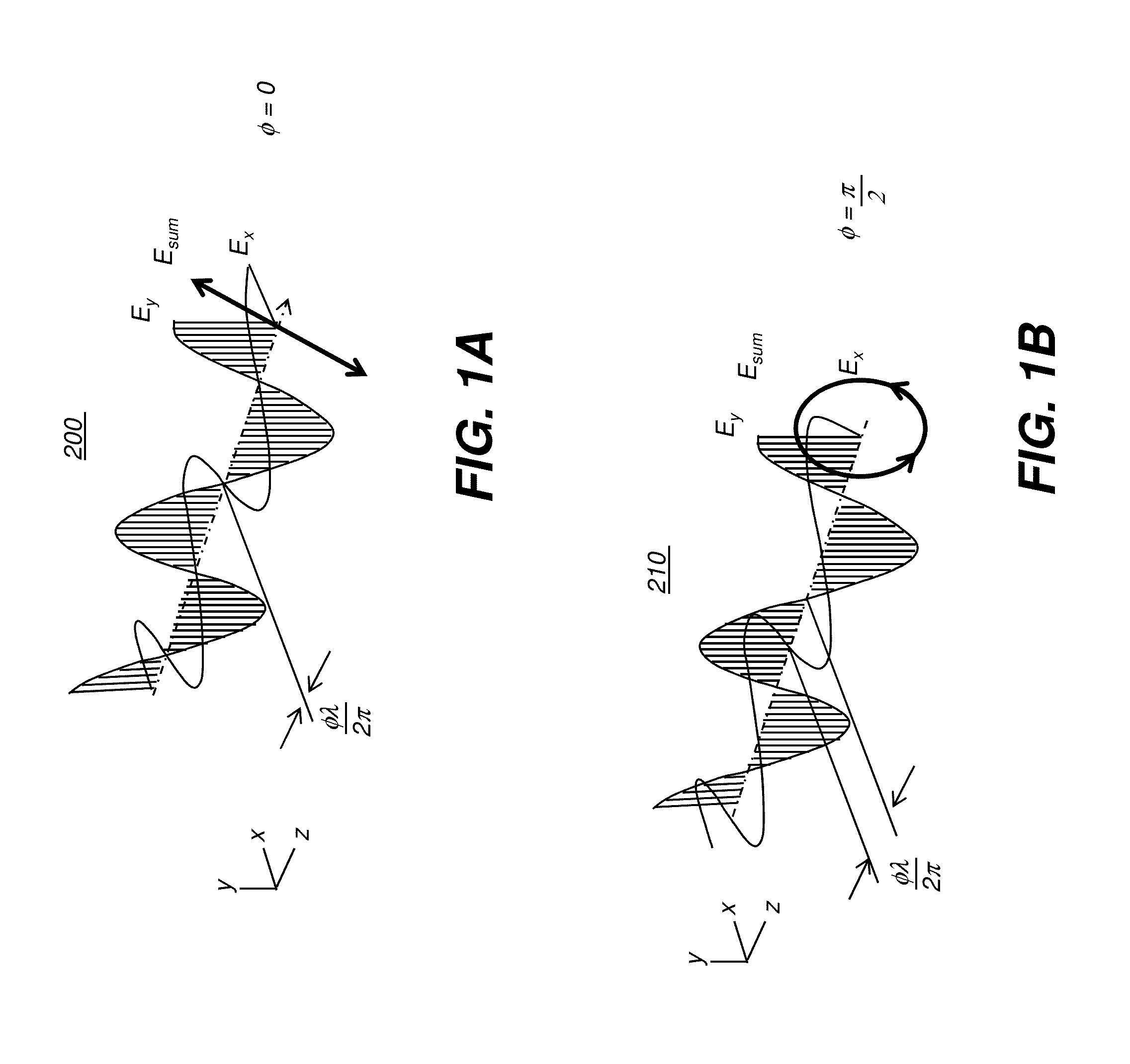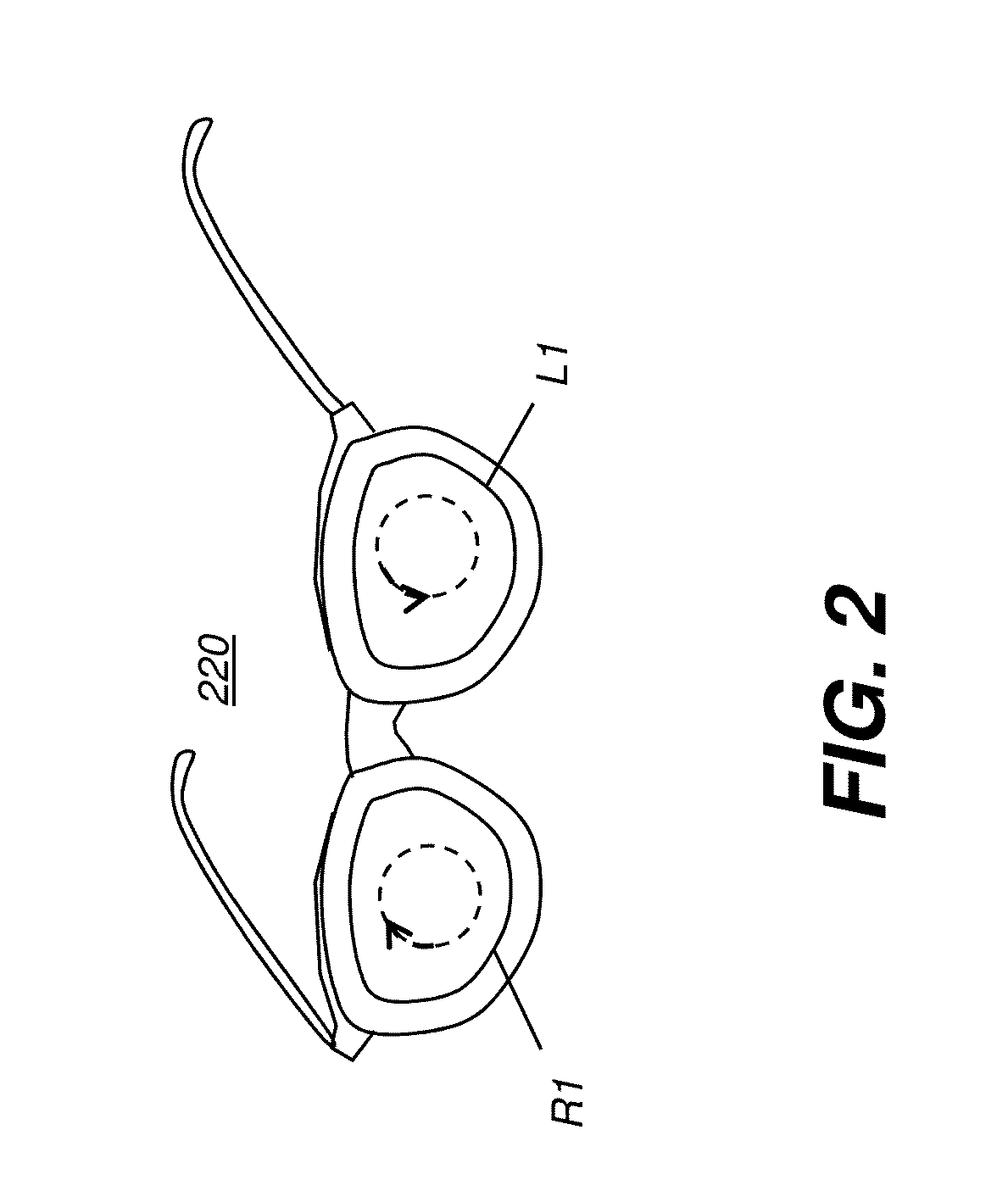3D Polarized Eyewear
a polarized eyewear and stereoscopic technology, applied in the field of stereoscopic display apparatus and methods, can solve the problems of not being well suited to use in 3d imaging glasses, complicating the manufacture of 3d polarization glasses, and general use of linear polarized light, so as to improve the differentiation of left- and right-eye imaging, reduce cross-talk, and increase the amount of light
- Summary
- Abstract
- Description
- Claims
- Application Information
AI Technical Summary
Benefits of technology
Problems solved by technology
Method used
Image
Examples
Embodiment Construction
[0037]Elements not specifically shown or described may take various forms well known to those skilled in the art. Figures shown and described herein are provided in order to illustrate key principles of operation and component relationships along their respective optical paths or fabrication techniques according to the present invention and are not drawn with intent to show actual size or scale. Some exaggeration may be necessary in order to emphasize basic structural relationships or principles of operation.
[0038]In the context of the present disclosure, the term “display surface” relates to any type of display surface or device that provides stereoscopic or 3D image content in which light for each of the left-eye and right-eye image content is provided having circular polarization. The respective image content for each eye is of opposite circular polarization. Thus, for example, where right circular polarization is used for the right-eye image, left circular polarization is used f...
PUM
 Login to View More
Login to View More Abstract
Description
Claims
Application Information
 Login to View More
Login to View More - R&D
- Intellectual Property
- Life Sciences
- Materials
- Tech Scout
- Unparalleled Data Quality
- Higher Quality Content
- 60% Fewer Hallucinations
Browse by: Latest US Patents, China's latest patents, Technical Efficacy Thesaurus, Application Domain, Technology Topic, Popular Technical Reports.
© 2025 PatSnap. All rights reserved.Legal|Privacy policy|Modern Slavery Act Transparency Statement|Sitemap|About US| Contact US: help@patsnap.com



